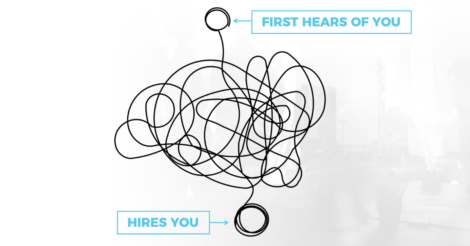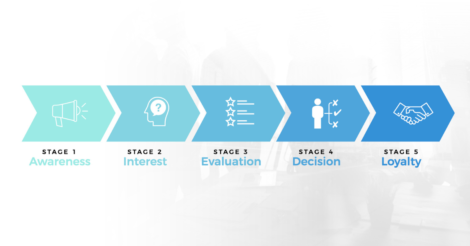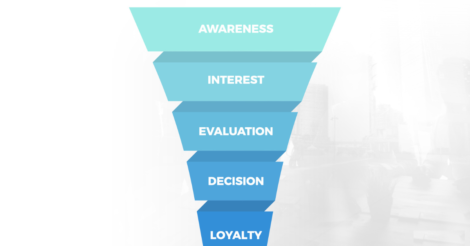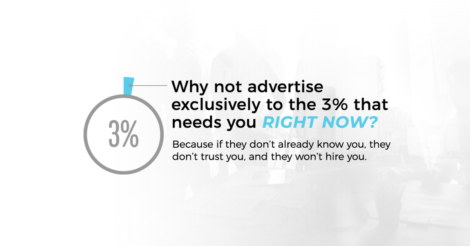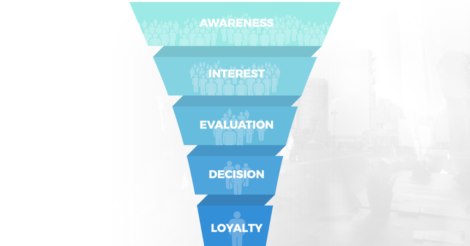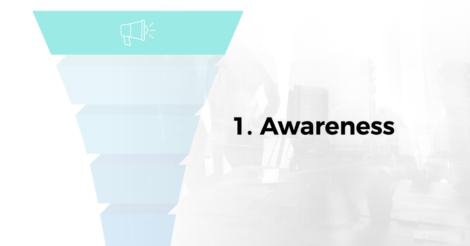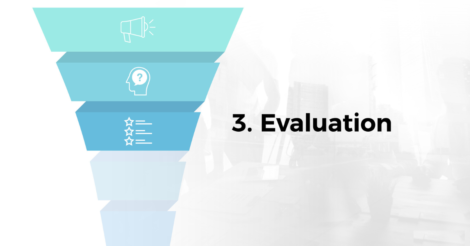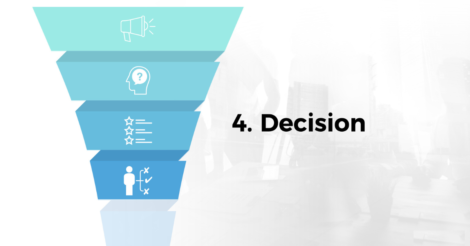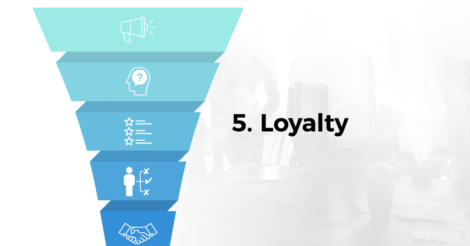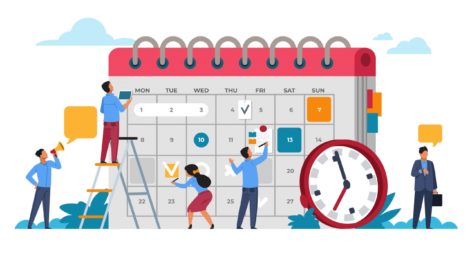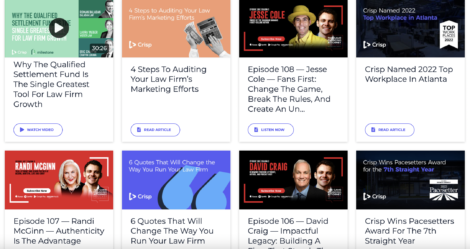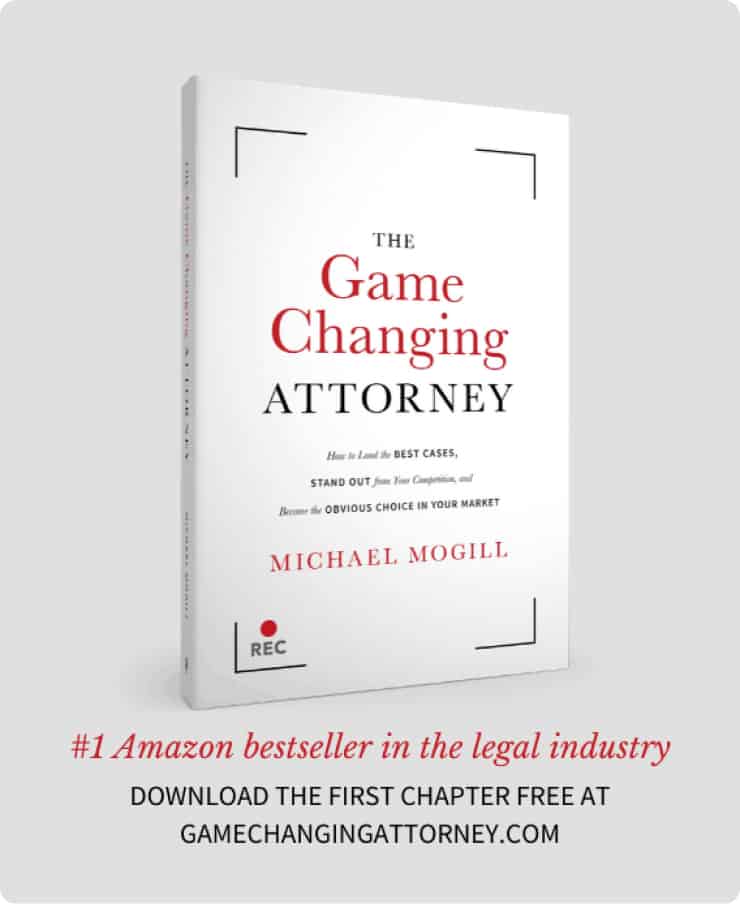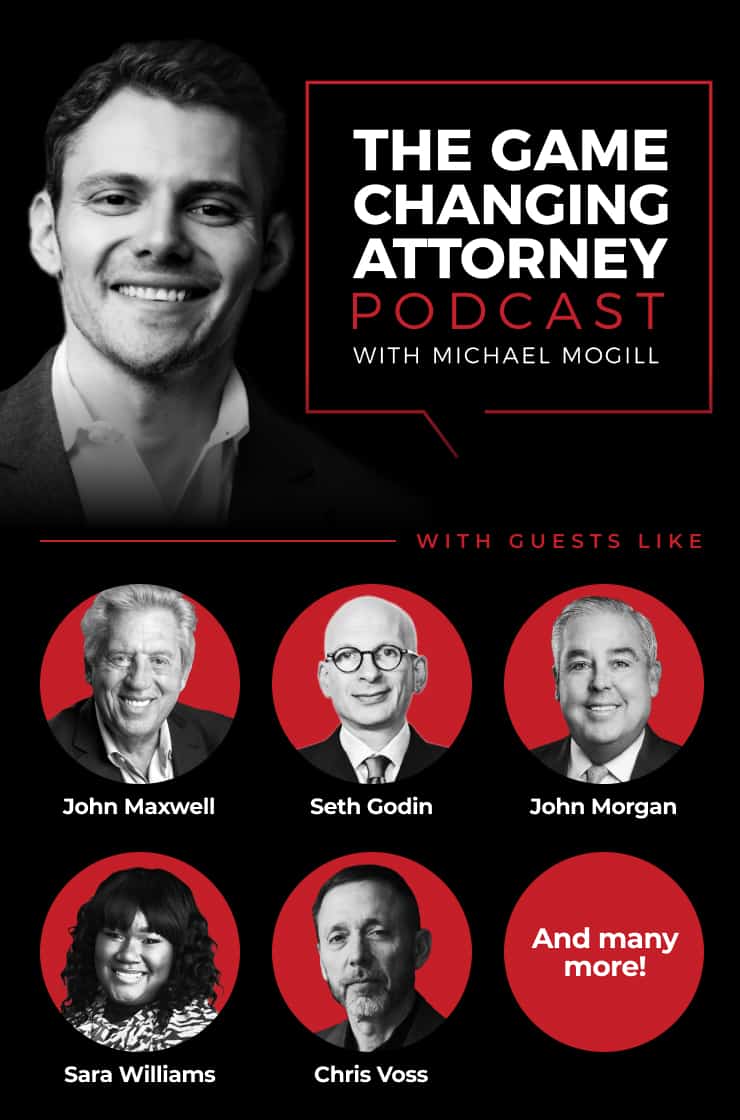“Content marketing is the only marketing left.”
These words were said by the one and only Seth Godin, considered the “Godfather of Marketing.” He believes that if content marketing isn’t at the center of your law firm’s marketing strategy, then you’re doing it wrong — and he’s not the only one.
78% of brands that were successful with content in 2021 have a documented marketing strategy.
73% of those brands spent 10% to 70% of their total marketing budget on content marketing.
46% of them increased their paid content promotional budget in 2021.
72% of companies plan to increase their content marketing budget in 2022.
Clearly, these content marketers are onto something — and this powerful discipline can impact your law firm in some surprising ways too that don’t have anything to do with billboards or leads.
Overwhelmed and unsure of where to start? We can help.
In this article, we’re going to show you:
- Introduction to the Marketing Funnel
- Strategizing Your Content Marketing Funnel
- Understanding Content Types and Distribution Channels
- How to Develop a Content Calendar
Introduction to the Marketing Funnel
Let’s go back to basics for a moment.
What is CONTENT?
Content can mean many different things, but overall, it’s anything that provides information — it’s practical, functional, and/or tactical.
Why is content important?
Without content, we wouldn’t know anything about anything. When you think of some of your favorite companies, think about why you like them. The answer is probably because you’ve learned something from them, gained something from their products or services, or have enjoyed following what they do. Whether these things came in the form of articles, quizzes, literature, or classes, they have brought value to your life in one form or another.
Here are a few of the most powerful content types that law firms can use to make this kind of connection with their ideal clients:
- Blog posts
- Videos
- Podcasts
- Infographics
- Emails
- eBooks
- Quizzes
- Checklists
- Worksheets
- Courses
- Webinars
That’s just the beginning — there is no real limit to what is and is not considered content. As soon as you find something that communicates your value and connects with your clients, make use of it.
What does content have to do with a funnel?
A marketing funnel describes your client’s journey with you from the very first second they learn of your existence to long after they become a loyal customer. It’s a foolproof way to meet your potential clients where they are and deliver the content they need when they need it.
Gone are the days when consumers made decisions in a straightforward way. Your clients don’t simply see your ad once, click it, and hire you to represent them immediately. Instead, their journey looks more like this:
They first hear of you at some point, then a whole lot of something happens over time, and then eventually they hire you.
How can law firm owners make sense of this messy middle? How can you hope to reach your audience, connect with them, and move them closer toward becoming a client if the journey they take is long and windy?
Fortunately, there’s a way to understand this mess of a client decision-making journey in a simpler way. It’s not just a big mess, but it’s also not a simple straightforward conversion. There are a series of stages your ideal clients go through in that “messy middle” that we can process out and build into a structured content strategy.
These five stages are Awareness, Interest, Evaluation, Decision, and Loyalty.
But this journey still seems a little too linear to accurately reflect your law firm’s ideal marketing strategy.
Rather than thinking about the journey your ideal clients take as a linear one, where you move every individual through one step at a time through those five stages, it can be helpful to think of your audience as an aggregate: many individuals all existing in an ecosystem, some moving forward at faster rates than others, some spending more time in one stage still needing valuable touchpoints with your law firm, waiting for you to meet them where they are and move them along toward becoming that new client someday.
When we zoom out from the journey each individual takes, we realize it’s not just a journey.
It’s a funnel.
This is a more accurate depiction of the buyer’s journey that your law firm should be addressing with your content marketing strategy.
- The funnel is largest at the top, where your audience hasn’t heard of you, doesn’t currently have a legal need, but is a demographic and psychographic fit for someday being an ideal client when they DO need you.
- A smaller group moves forward to the middle of the funnel when they have a legal need and are weighing their options.
- And at the Decision stage where they’re ready to hire a lawyer, even fewer individuals end up there at a time.
Think about your current marketing strategy, whether you’ve thought about it in terms of a content funnel, buyer’s journey stages, or less of a structured approach. Thinking about what you currently do (or what you see competing law firms in your marketing doing), who are you marketing to?
Let’s assume that even 3% of people in your target market are actively searching for a lawyer right now. In other words, this tiny percentage of people are further along their decision-making journey. They have a legal need, they know they need to hire a lawyer, and they are looking into their options to make sure they make the right choice.
No doubt, you need to be on the radar of this 3% — make sure they know who you are, they have a sense of what makes you different from your competition, and they have evidence that you are the best choice for them.
But what about the other 97%? What are you doing with them? Ignoring them?
97% of consumers have no need for a lawyer right now. They don’t have a legal problem, so they’re not even thinking about it.
Not to mention, the people in that 3% who are actively looking to hire an attorney right now need to know who you are before they have that need. When someone needs a lawyer, they often need one RIGHT NOW. By that point, you won’t have time to build the relationship of trust that you need in order for them to choose you.
You need to start with them before they need you. You need to start with the 97%.
Let’s apply some very simple math to our marketing funnel here:
- Imagine there are 100 people at the top of your funnel in the Awareness stage.
- Maybe 40 then receive enough touchpoints, engage with enough content, and become familiar enough with your law firm’s brand to be considered part of that Interest stage.
- Of those, after a few months engaging with more valuable and relevant content and strengthening the relationship and brand affinity for your law firm, 10 have a legal need and start considering hiring you in the Evaluation stage.
- Of the 10 that consider hiring you and look into some more results-oriented content on what they could expect working with your law firm, 3 enter the Decision stage by reaching out to book an initial consultation about their potential case.
- After the qualification round, only 1 signs as a new client and ends up in the Loyalty stage.
Clearly, the goal of strategizing a funnel is to move potential clients to the next stage, at every stage.
How do we accomplish this goal?
With content.
If you want to learn more about the magic of a relentless marketing strategy, check out Crisp’s Founder and CEO Michael Mogill‘s presentation from the Game Changers Summit 3 on the importance of building a cult following for your brand.
Strategizing Your Content Marketing Funnel
A content marketing funnel is designed to help you zero in on what content to create, what funnel stages need the most content support, and how to ensure your content accomplishes your marketing goals at every stage.
Before you begin, the absolute most important step you can take to generate the right content ideas and provide truly valuable content is to understand what struggle your audience goes through. What solutions to those struggles do you provide them? How can you become part of the conversation?
Once you frame your exploration around understanding your ideal client, you can then expand to consider that they have different needs at different stages in their decision-making journey. The 3% who need a lawyer right now have very different concerns than the 97% that don’t have a current legal need, but still need valuable touchpoints with your law firm to start building brand awareness.
The goal of legal marketing is to meet your audience where they are so you can give them what they need. This is so that you can tailor your messages and content to their specific interests, challenges, and experiences — every step of the way.
This brings us to stage one of the content marketing funnel:
Stage 1: Awareness
The first stage you need to move your audience through is Awareness. At first, your prospective clients won’t know who you are or why they should be interested in what you have to say. Your objective is to get their attention, give them something valuable, and change that.
At the Awareness stage, social media is going to be your best friend. With the robust targeting capabilities of ad platforms on Facebook and other major social media platforms, this is an ideal way to get your message in front of ideal clients that don’t yet know you — in places they are already spending their time and attention.
Here are a few ways to build your brand’s awareness:
- Create high-quality content that appeals to the appropriate audience. Don’t give them something they won’t care about.
- Utilize engaging and informative captions and calls-to-action. Ask questions and give them a place to go once they have this information.
- Use clickbaity content with substance. No one wants to feel like they’re clicking on a fake site, so deliver real value and be genuine.
Let’s say you’ve gotten their attention. What’s next?
Stage 2: Interest
In the Interest stage of the content marketing funnel, you’ve successfully made potential clients aware of your brand — you’ve even piqued their interest. They may think of you as a trusted source of information already, and they might even recognize their need to hire an attorney at this stage. That doesn’t mean that they’re anywhere near ready to partner with you just yet, though, which is why giving them valuable content tailored to the Interest stage is of the utmost importance.
This is a great time to serve that audience with presentations and webinars going more in-depth on specific topics they may be struggling with. You should also be continuing to produce blog posts, eBooks, and videos that answer common questions or help to solve challenges your prospect is facing. Interactive content and downloadable, gated content is great at this stage as well: worksheets, checklists, and tools, etc.
This type of content is practical and useful to your potential client — and they’ll remember you as the attorney who provided them the free, useful content.
Stage 3: Evaluation
If a potential client has moved through the Awareness and Interest stages, that means they’re seriously considering working with you — but don’t get too comfortable. They’re likely considering a few other options as well.
The Evaluation stage is going to be much more “you” focused than the previous two. Since this is the case, consider showcasing real stories and results of clients who have worked with you before. These can come in the form of reviews, testimonials, and any other content that sings your praises. Demonstrate your expertise as much as possible and make potential clients feel confident that they’re making the right choice by working with you.
If you’ve managed to guide a potential client successfully through the first three stages, moving them to the fourth stage is how you can start to get a return on that content.
Stage 4: Decision
We know that just reading the word Decision probably makes you feel as though you’ve made it by landing another client. Though we would love to tell you that, you can’t let up on being relentless. Even at the Decision stage, there is always a possibility that you will lose your new client if their experience is anything short of excellent.
In order to avoid this, be sure to remove any friction points, deliver top-notch customer service, and reinforce your new client’s decision to hire you. Continue providing resources tailored to them and their challenges so they feel good about deciding to work with you.
Content marketing can support you in these efforts through tailored email and scripted phone followups as part of the intake process your firm already has in place. This is where you must really look at whether you are delivering on your promise of world-class service and ensuring a new client’s expectations are met from the get-go.
Decision is still a great stage to continue providing eBooks, worksheets, whitepapers, blog posts, and videos specific to your firm’s process to make sure they feel fully welcomed, heard, and understood. Especially when you get more specific details about their particular case in the intake process, you can really personalize and tailor their content experience at the Decision stage.
Above all, make sure your new clients feel understood and welcomed. If they don’t, there’s a good chance they will regret their decision completely. Be sure they feel important, taken care of, and completely in the loop on next steps they can expect with your firm.
Stage 5: Loyalty
Congratulations! You’ve made it to the final stage of the content marketing funnel (hint: we think it’s one of the best ones). Loyalty is all about maintaining a relationship with your clients for the long term. Always keep them engaged and show them that you still care about them, even after their cases closes.
Continue nurturing your relationship with your clients to build community, attract referrals, and continue making a lasting impression on anyone you work with. This includes providing clients with useful content such as newsletters, in-person events and mixers, client exclusive presentations and webinars, and more — anything that will help them feel appreciated and remembered.
If you continue to provide value and a positive experience for your past clients, they will continue to regard you as “their” lawyer, ideally come back to you if they ever have another legal need, and of course refer their friends, family, and anyone else in their life that may one day need a lawyer as well.
Understanding Content Types and Distribution Channels
Gary Vaynerchuk, serial entrepreneur, investor, philanthropist, and past speaker at Crisp’s Game Changers Summit events, said it best:
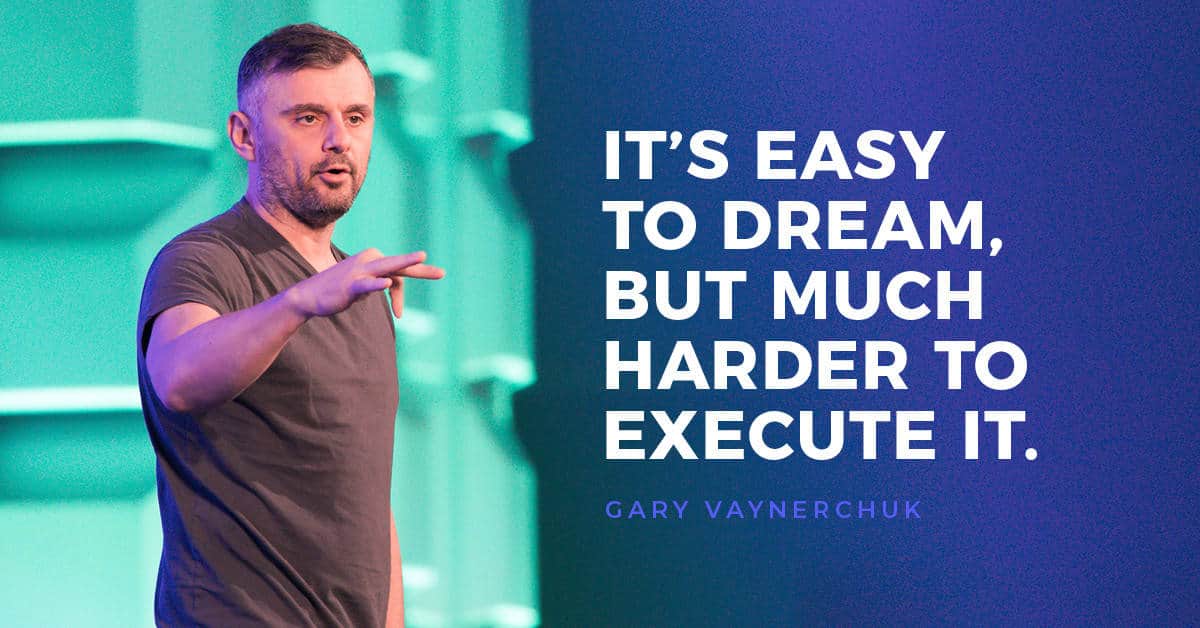
Where you make use content of it is important — but pointless if you don’t have a plan for the content to be seen by your ideal audience is. Once you know the kind of clients you want to attract more of, you can dial in on where they’re spending their time and attention: news outlets, physical locations, social media platforms, and beyond.
So to distribute you content where your ideal client is, you need to clarify who your ideal client is.
How do you clarify who your ideal client is? By creating a buyer persona: a semi-fictional representation of your ideal client.
By creating a buyer persona, you are essentially creating a representative of your ideal client — someone you can speak to directly. It gives you a clear understanding of what will actually appeal to this person when you are creating content. At the end of the day, every piece of content you create should matter to your ideal client. If it doesn’t, they won’t engage with it, and you won’t effectively move them to the next stage in your content marketing funnel.
When you detail your ideal client buyer persona, include the sources they use to gather information, enjoy entertainment, and consume content. This will likely be a combination of digital, print, and relational sources — but consider what channels you can leverage to reach the most targeted audience for the best price.
Increasingly, the answer is social media. With vast audiences, robust targeting capabilities, and powerful engagement on a variety of platforms, finding the social media channels where your ideal audience is spending their time and attention is the first step on reaching them with your law firm’s content marketing strategy.
Here’s a quick look at some demographics of the most popular social media platforms today:
- Number of monthly active users: 2.91 billion
- Largest age group: 25-34 (31.5%)
- Gender: 43% female, 57% male (no data on other genders)
- Time spent per day: 33 minutes
- Number of monthly active users: 2 billion
- Largest age group: 25-34 (31.2%), with 18-24 close behind at 31%
- Gender: 48.4% female, 51.8% male (no data on other genders)
- Time spent per day: 29 minutes
- Number of daily active users: 211 million (up from 187 million)
- Largest age group: 18-29 (42%)
- Gender: 38.4% female, 61.6% male (no data on other genders)
- Time spent per day: 31 minutes
- Number of monthly active users: 810 million
- Largest age group: 25-34 (58.4%)
- Gender: 48% female, 52% male
- 63% of LinkedIn users access the network weekly, and 22% daily
- Number of monthly active users: 2+ billion
- Largest age group: 15-35 (highest reach)
- Gender: 46% female, 54% male (no data on other genders)
- Time spent per session: ~30 minutes
Regardless of which platforms you focus on with your law firm’s content, don’t forget to harness the power of retargeting. Retargeting is a form of online advertising by which online advertising is targeted to consumers based on their previous internet actions. It’s a great tool to continue nurturing potential clients who have engaged with your messaging and/or visited your website. These people have some level of familiarity with you — are further down your marketing funnel — and thus can be continuously hit with your ads to strengthen that relationship, stay top-of-mind, and continue to nurture them through new stages of their decision-making journey.
It’s important to remember that you don’t solely have to use social media either. Consider sending direct mail, investing in billboards, hosting events, or any other marketing efforts that have worked for you in the past to continue meeting your ideal clients where they are and providing valuable content to move them down the funnel.
There are endless possibilities and opportunities for getting your message and your content out there, and the sooner you get to work producing and distributing, the better off you’ll be in the long run.
How to Develop a Content Calendar
You’ve learned about the stages of your ideal clients’ decision-making journey. You’ve explored content marketing funnels and how to use them. You’re familiar with the vast array of content types and distribution channels at your disposal.
What do you do next?
It’s simple: develop a content calendar to put it all into action.
Having established the tools needed to understand your ideal client and create the appropriate content to reach them at the right time, you’ll need a way to plan and execute content strategy.
Publishing content across platforms has to be done methodically and consistently for any marketing strategy to work. A content calendar will help you organize what content you’re producing, when it’s to be published, and where it’s to be distributed.
The greatest advantages of using a content calendar are that you’ll be able to clearly visualize what content you’re producing for each stage of the funnel, identify gaps and opportunities, and instill accountability on your team to ensure your plan is executed effectively.
There are many tools and templates available for developing your content calendar — but if you’re just starting out, we recommend keeping it simple. On a daily, weekly, and/or monthly basis, include entries that map out:
- WHAT will be published
- WHERE it will be published
- WHEN it will be published
- HOW its success will be measured
As you’re getting started ramping up your law firm’s content marketing strategy, don’t be afraid to reuse content that has performed well. The ultimate benefit of repurposing content is that it makes content much easier to scale. If you don’t have time to produce something brand new, that’s okay. As long as you’ve got an arsenal of effective content ready to go, you can reuse it again and again.
Continuously monitor your content and determine how it’s performing. Always ask yourself:
- What’s going well?
- What’s not working?
- Do you need to change platforms?
- Do certain pieces of content get better reception on different platforms?
Once you figure out the answers to these questions, you’ll have a much better idea of how to optimize your marketing to provide real value to your ideal audience.
Whatever methods you use, make sure they bring your law firm results. Keep your content calendar organized and constantly updated, and you’ll have no trouble getting your content marketing funnel underway.
Final Thoughts
If you’ve psyched yourself out about creating a content marketing plan, this is your sign that it’s not the nightmare you had been dreading. Content marketing can be an exciting opportunity to reach more potential clients, build your law firm’s brand, and make a bigger impact with your expertise.
The best part? You don’t have to go it alone. There are plenty of resources out there to help you improve your content marketing strategy so you can keep doing what you do best: helping those who need you.
If you’re up to the challenge, remember to strategize a complete content marketing funnel, understand the different types of content you can distribute, and always keep your content calendar full and effectively executed.
With a recipe like that, you cannot fail.



